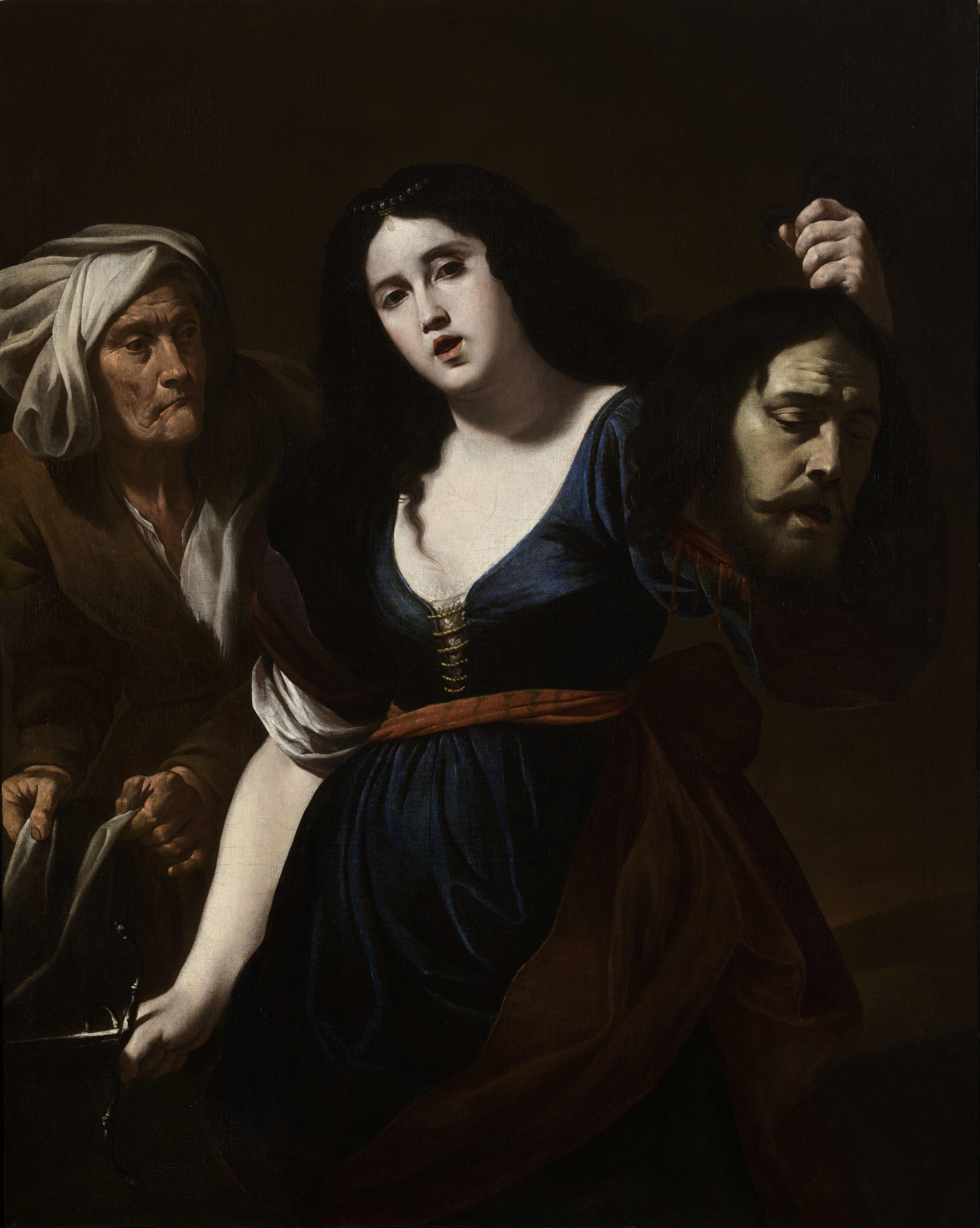Andrea Vaccaro
b. 1598, Naples
d. 1670, Naples
Judith with the Head of Holofernes
c. 1620s
Oil on canvas
127.5 x 101 cm (50 1/4 x 39 3/4 in.)
With frame: 149 x 126 x 6.5 cm (58 5/8 x 49 5/8 x 2 1/2 in.)
Provenance
Private collection, Milan.
Senator Oliver Wolcott (1726–1797), Litchfield, Connecticut by inheritance in the family,
Victor D. Spark, New York from c. 1950 until 1969,
J. Paul Getty Museum, Malibu, California,
Christie’s, New York, 21 May 1992, lot 31,
Carlo Maria Croce, New York,
Koelliker collection, Milan.
Literature
Creighton Gilbert, Baroque Painters of Naples, exhibition catalogue, John and Mable Ringling Museum of Art, Sarasota, Florida, no. 15.
Burton B. Fredericksen, Catalogue of the Paintings in the J. Paul Getty Museum, Malibu, 1972, pp. 47–48.Giuseppe de Vito, 'Appunti per Andrea Vaccaro con una nota su alcune copie del Caravaggio che esistevano a Napoli', in , Scritti in memoria di Raffaello Causa, Naples, 1996, p. 77.
Vincenzo Pacelli, Dipinti del ‘600 nelle collezioni napoletane, Naples, 2001, p. 46.
Riccardo Lattuada, 'I percorsi di Andrea Vaccaro (1604–1670)', in Nicola Vaccaro (1604–1670): un artista a Napoli tra Barocco e Arcadia, Todi, 2009, p. 51, n. 5.
Nicola Spinosa, ed., Ritorno al barocco: da Caravaggio a Vanvitelli, exhibition catalogue, Museo Nazionale di Capodimonte, Naples, 2009–10, p. 223, no. 1.113.
Riccardo Lattuada, ed. Francesca Baldassar, Artemisia Gentileschi e il suo Tempo, exhibition catalogue, Palazzo Braschi, Rome, 2016–17, pp. 262–63, no. 86.
Description
According to the Book of Judith in the Old Testament, the Assyrian general Holofernes intended to destroy the Jews of Bethulia. Nevertheless, enamored with a beautiful Jewish widow named Judith, he invited her into his tent with the aim of seducing her, but, taken with her beauty and inebriated with drink, he fell asleep, and Judith, with the help of her maidservant Abra, decapitated the general using his own sword. Thus, Judith courageously liberated her people.
The painting was quite clearly inspired by the Salome with the Head of John the Baptist painted by in 1610 by Caravaggio during his second stay in Naples, and now in the collections of the National Gallery in London (fig. 1). In particular, the head covering and face of Judith’s servant echo that of Salome’s elderly companion, both Judith and Salome wear a dark dress over a white camicia, and the display of the head, held by the hair in the fist of the executioner in Caravaggio’s painting and that of Judith in Vaccaro’s, is also analogous.
Indeed, the present painting is dated by scholars to 1620s, when the young painter first became a follower of Caravaggio. He copied Caravaggio’s Flagellation (Museo Nazionale di Capodimonte, Naples), and his copy and the original hung in San Domenico Maggiore in Naples (the copy remains in situ); also copied David with the Head of Goliath (now Kunsthistorisches Museum, Vienna; Vaccaro’s copy belongs to the Fondazione Longhi, Florence). Other early works, like the present canvas, are clearly indebted to Caravaggio’s naturalism and chiaroscuro.
Once in the collection of the J. Paul Getty Museum in Los Angeles, California, another version of the painting signed by Andrea Vaccaro is in the collections of Hadrec Castle in Moravia. When the painting was presented at an exhibition at the Ringling Museum of Art in Sarasota, Florida, in 1961, it was correct attributed to Vaccaro in the exhibition catalogue by Roberto Longhi. Burton Fredericksen, in his 1972 catalogue of the Getty collections, mentions a previous attribution to Ribera.
Fig. 1. Caravaggio, Salome with the Head of Saint John the Baptist, 1610, oil on canvas, National Gallery, London.




